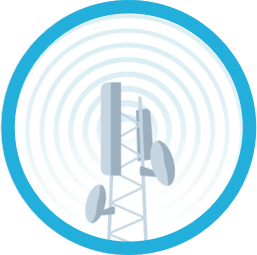Passive DAS, also referred to as a cell phone signal booster, is the most common type of DAS installation. It uses passive components, pieces that do not actively generate energy, to enhance in-building coverage, facilitating lowest cost and shortest deployment time.
Signal is obtained off-air from local cellular towers using a donor antenna usually mounted on the roof. The signal is transmitted through coaxial cable, boosted by an amplifier, and rebroadcasted within a defined space. Most Passive DAS support multiple carriers simultaneously without requiring much involvement from the carriers.
It’s a great solution for enhancing LTE, 4G, and 5G cellular reception across areas of up to 100,000 sq ft. Though, with multiple units, it’s able to cover up to 500,000 sq ft.



























